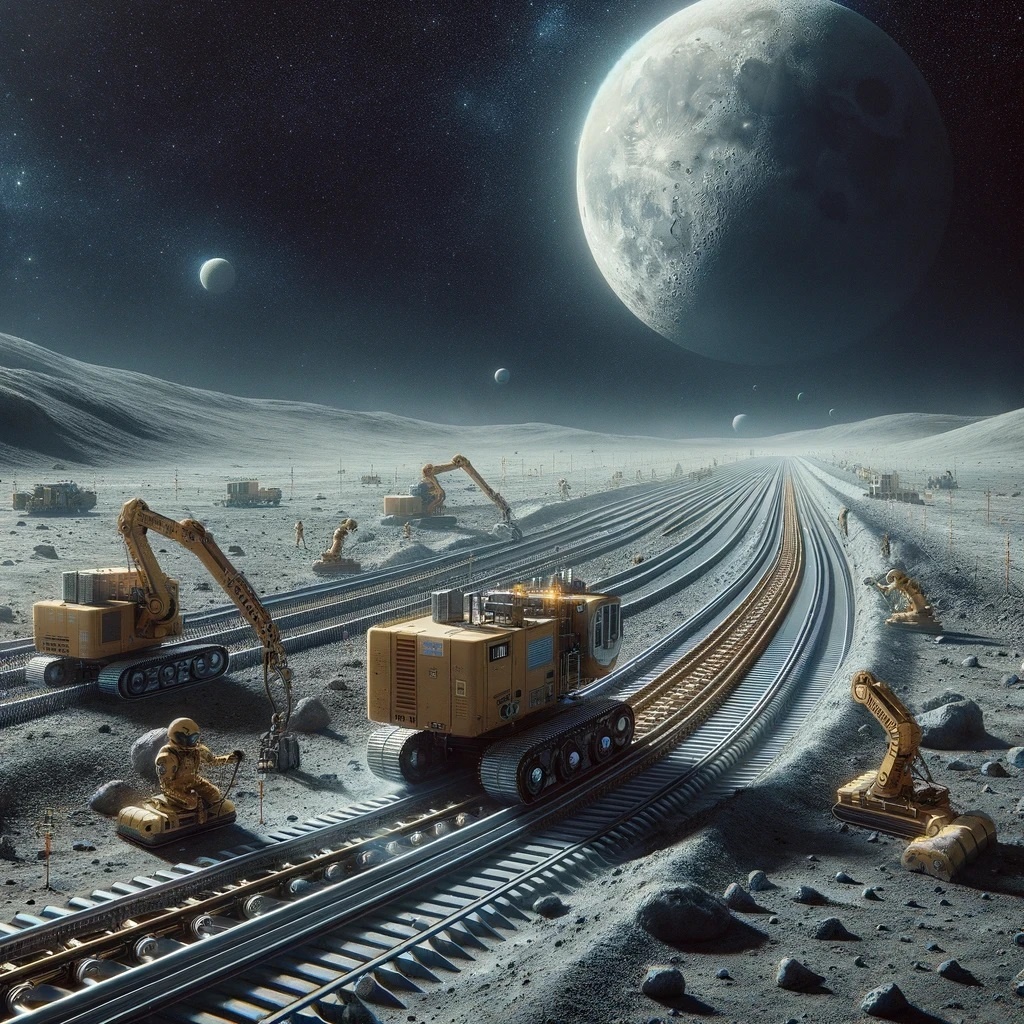Roughly two years and six months from now, as part of NASA’s Artemis III mission, astronauts will set foot on the lunar surface for the first time in over fifty years. Beyond this mission, NASA will deploy the elements of the Lunar Gateway, the Artemis Base Camp, and other infrastructure that will allow for a “sustained program of lunar exploration and development.” They will be joined by the European Space Agency (ESA), the China National Space Agency (CNSA), and Roscosmos, the latter two collaborating to build the International Lunar Research Station (ILRS).
Anticipating this process of lunar development (and looking to facilitate it), the Defense Advanced Research Projects Agency (DARPA) launched the 10-year Lunar Architecture (LunA-10) Capability Study in August last year. In recent news, the agency announced that it selected Northrop Grumman to develop a moon-based railroad network. This envisioned network could transport humans, supplies, and resources for space agencies and commercial ventures, facilitating exploration, scientific research, and the creation of a lunar economy.
According to DARPA, the seven-month LunA-10 study aims to establish “an analytical framework that defines new opportunities for rapid scientific and commercial activity on and around the Moon.” It also aims to foster the development of foundational technology to optimize lunar infrastructure, allowing space agencies to move away from individual efforts within isolated, self-sufficient systems and towards shareable, scalable, resource-driven systems that can operate together. In keeping with NASA’s long-term objectives, this work will complement the administration’s “Moon to Mars” objectives.

In layman’s terms, the plan is to develop the technologies that will allow space agencies and companies to access each others’ resources, facilities, and information to promote further growth opportunities. Several key sectors are identified in the solicitation that must be developed into services to sustain a long-term presence on the Moon based on an independent market analysis of the future lunar economy. They include construction, mining, transit, energy, agriculture, and research (e.g., medicine, robotics, and life sustainment) that will have applications for space exploration and life on Earth.
Other aspects include lunar and planetary science, communications, digital infrastructure, and Position, Navigation, and Timing (PNT) technology. Dr. Michael “Orbit” Nayak, a program manager in DARPA’s Strategic Technology Office, extolled DARPA’s long history of working with NASA during last year’s announcement:
“For 65 years, DARPA has pioneered and de-risked technologies vital to civil space advancement — from the rocket technology in the Saturn V that took humans to the Moon for the first time, to the recent DARPA-NASA partnership to enable faster space travel to the Moon and beyond with a nuclear thermal rocket engine.
“LunA-10 continues this rich legacy by identifying and accelerating key technologies that may be used by government and the commercial space industry, and ultimately to catalyze economic vibrancy on the Moon. Just like DARPA’s foundational node of ARPANET grew into the sprawling web of the internet, LunA-10 is looking for those connective nodes to support a thriving commercial economy on the Moon.”
As part of this 10-year plan, Northrop Grumman will be tasked with creating the infrastructure that will physically connect lunar facilities and allow for the movement of people and resources back and forth. Their responsibilities, as spelled out in their contract of opportunity, include defining the interfaces and resources required to build a lunar rail network; identifying cost, technological, and logistical risks; creating prototypes, demonstrations, and analyses of a concept design and architecture, and exploring robotics concepts for constructing and operating the system.
These robotics concepts must be able to operate on the lunar surface and carry out specific tasks, such as grading and foundation preparation, track placement and alignment, joining and finishing, inspection, maintenance, and repairs. Said Chris Adams, the vice president and general manager of strategic space systems at Northrop Grumman:
“This investment in key developmental research keeps our technology at the forefront of next-generation solutions. With our proven experience in the integration of complex systems and commercialized autonomous services, we will continue to create lasting change for a sustainable space ecosystem.”
Northrop Grumman and other selectees will receive an Other Transaction award of up to $1 million. They will present their work at the Spring meeting of the Lunar Surface Innovation Consortium (LSIC) in April 2024 and provide a final report in June 2024.
Further Reading: Northrop Grumman


Every time I see pictures like the above I have to ask myself, how did they get all that equipment and the supplies to the Moon.
I wonder if a more practical approach to creating transportation routes on the moon would be to attempt to convert regolith into hard-surfaced roads. Limitless supply of the stuff, and if some sharp pencil comes up with the technology to make it happen ‘up there’, the ultimate cost would surely be much cheaper than attempting to build rail and related equipment there or send it from earth.